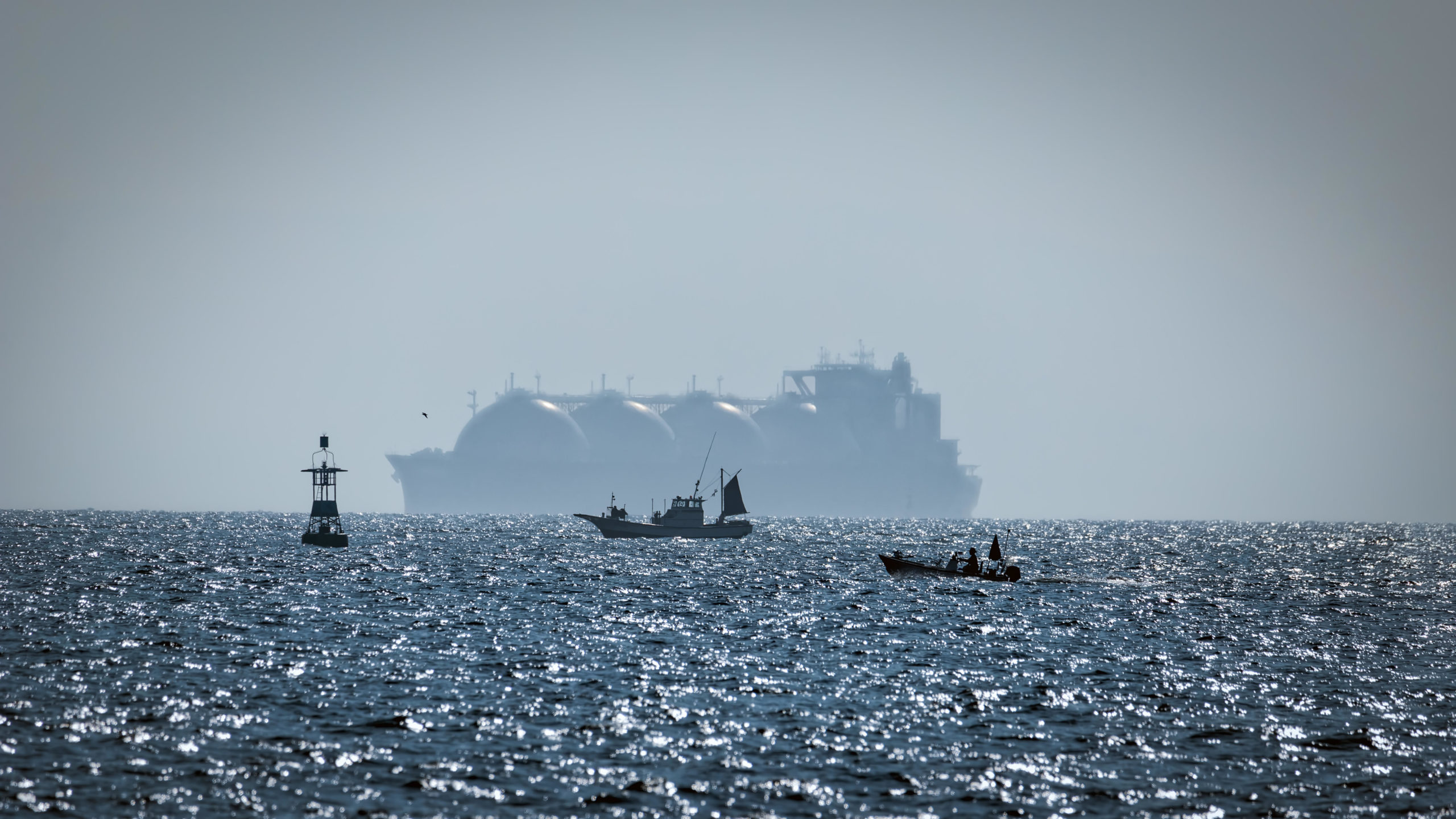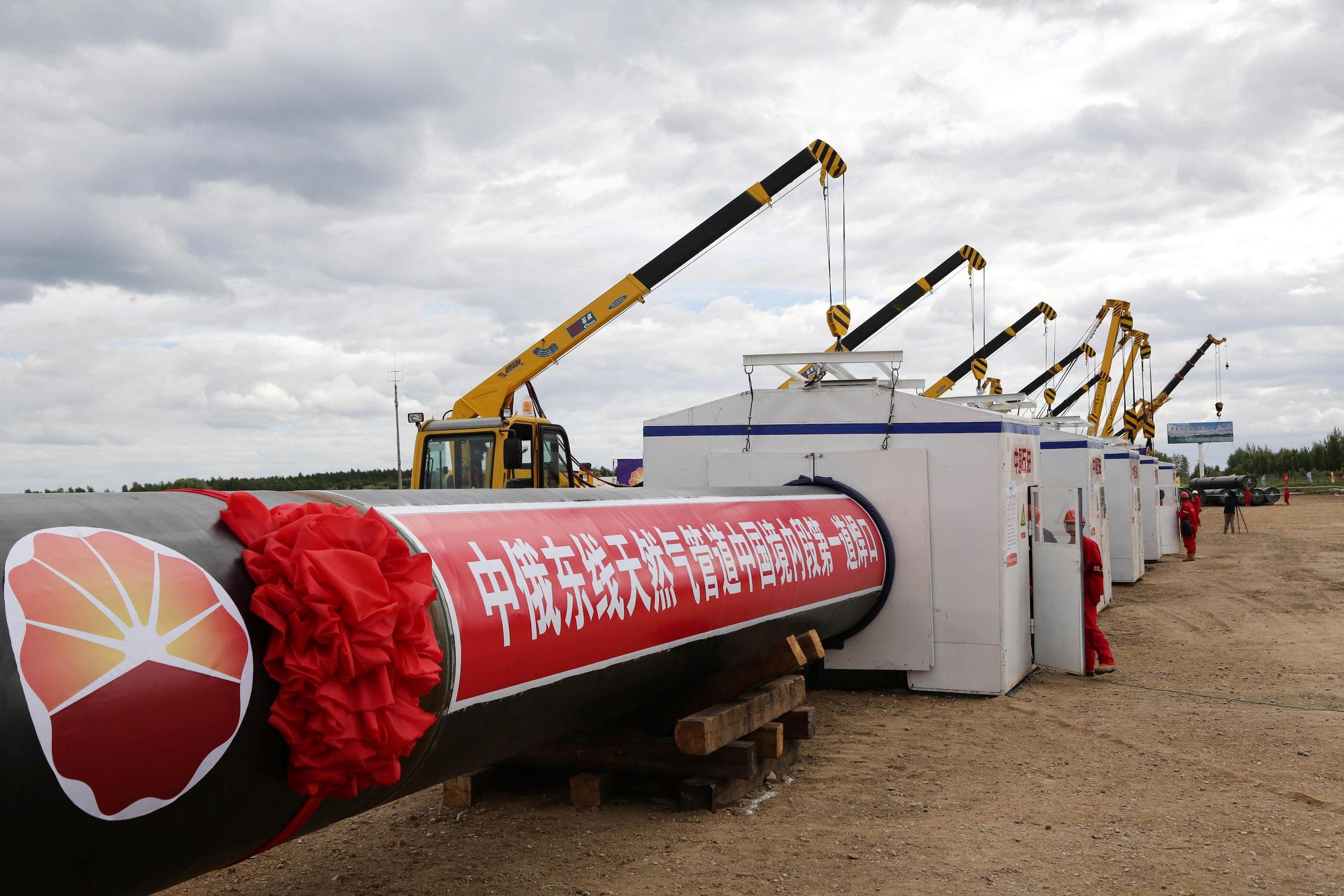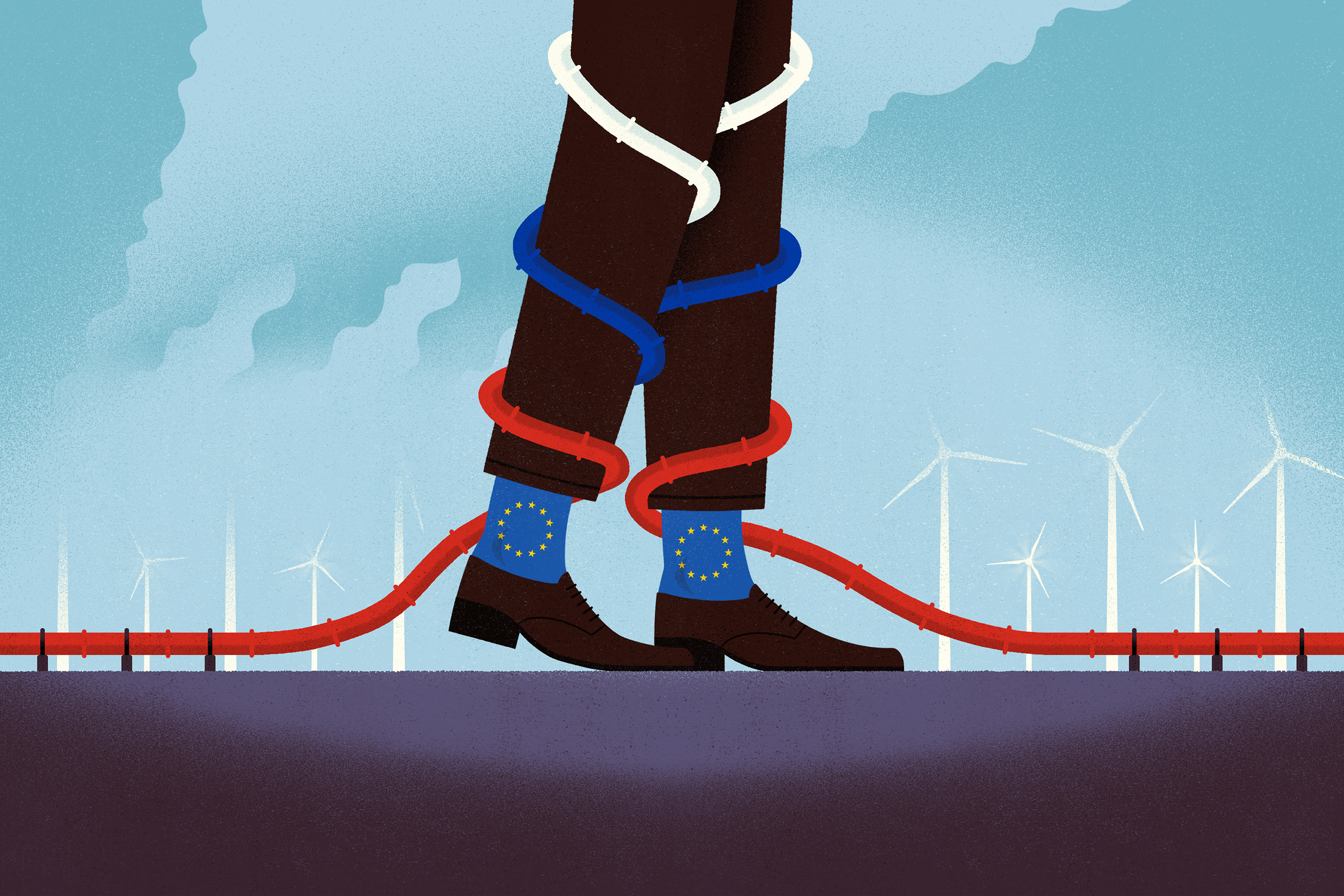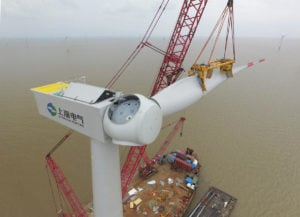Russia’s war in Ukraine has triggered a fundamental shift in its energy trading relationships with the rest of the world, particularly Western Europe. Signs of that realignment are already appearing as European leaders take action to cut their reliance on Russia for energy supplies. Crucially, this may speed up Russia’s energy pivot to China.
China and the EU after the pandemic
Read more from this series, in which we compare the post-Covid policies of China and the European Union, and how their relationship is evolving
The European Union has laid out targets to slash its demand for Russian natural gas by two-thirds by the end of 2022 and eliminate this dependence before 2030. The plan relies on more imports of liquefied natural gas (LNG) from global markets, heat pumps and energy efficiency, as well as more low-emission power generation. LNG negates the need for pipelines by cooling natural gas to -162C at which point it reaches a liquid state, and can be stored and shipped, then turned back into gas.
Xi Nan, a gas and power expert at Norwegian-based consultancy Rystad Energy, said the proposed pivot is ambitious: Russia pumps enough gas into Europe every day to cover a third of the continent’s consumption.
It sent 155 billion cubic metres (cm) to Europe in 2021. Of that, a maximum 80 billion cm could be replaced by other gas sources, leaving a deficit of around 70 billion cm that would need to be filled by fuels such as coal, nuclear and renewables, said Nan.
The 80 billion cm is calculated based on maxing out LNG regasification capacity in Western Europe and increasing gas production on the continent. To put that in perspective, Europe would require new sources of LNG nearly equivalent to yearly deliveries to South Korea, the world’s third-largest buyer.
There simply isn’t available LNG capacity globally to supply Europe with gasBruce Robertson, Institute for Energy Economics and Financial Analysis (IEEFA)
It is difficult for Europe and Russia to decouple their natural gas trade. “Both sides are tied physically by the pipelines into an exclusive supply chain with high replacement costs and the risk of legal arbitration,” Kaho Yu, principal Asia analyst at Verisk Maplecroft, a strategic risk intelligence company, told China Dialogue.
As a reference, it took Russia over 10 years to gradually lower its dependency on transit via Ukraine for gas flows to Europe, from 65% in 2011 to around 25% in 2021, said Yu. “It is equally difficult for Europe to immediately diversify away from Russian gas with alternative gas supplies or a renewables-based system,” he added.
No quick fix
For European countries wanting alternatives to Russian gas, global LNG markets are an obvious place to find supplies in the medium term, particularly from the US.
“The US has the gas resources, the infrastructure, and the construction capabilities to achieve a significant increase in LNG exports relatively quickly,” said Ed Crooks, vice chairman, Americas, at energy research firm Wood Mackenzie.
However, “it cannot be an answer to immediate shortages – US LNG export facilities are already running at full capacity – but in a few years it could make a significant contribution to reducing Europe’s dependence on Russian gas,” said Crooks.
Indeed, Europe’s gas supply crisis has already sucked the world dry of LNG, forcing up prices. Emerging Asian markets, such as Bangladesh and Pakistan, have felt the brunt of this with no relief in sight, said the Institute for Energy Economics and Financial Analysis (IEEFA).
“There simply isn’t available LNG capacity globally to supply Europe with gas,” said IEEFA analyst Bruce Robertson. As a result, Europe and energy-hungry Asia are competing for spot LNG cargoes, which has caused gas prices in Asia to rise multiple times from mid-2021 to date.
To help Europe overcome potential supply disruption, the US has been discussing with major global gas producers to distribute some production to European buyers, agreeing to supply an additional 15 billion cm to the EU this year.
However, there are limited options. “It is also difficult for Europe to compete with Asian LNG buyers who pay high gas prices of more than US$30/MMBtu, which is unbearable in Europe. Moreover, many of the LNG supplies are already locked in the Asian market with long-term agreements,” said Verisk’s Yu.

Qatar, the world’s biggest LNG exporter until last year, when the US took the crown, is massively expanding its production capacity from 77 million to 110 million tonnes per year by 2026. “Therein lies the rub. There are at least four European winters before and if any Qatari gas arrives,” said Robertson.
International LNG supply will remain tight for the foreseeable future. The European energy crisis has quickly become a global crisis, with countries from Asia to South America scrambling for cargoes.
“Whether Europe goes for partial or full replacement of Russian gas, a significant pivot will be very challenging in all scenarios,” Tony Regan, a gas and LNG consultant at NexantECA, told China Dialogue.
“Far more needs to be done, and this may include radical steps, such as bringing back online coal and nuclear power. Investment in renewables, as well as battery storage to back up wind and solar, will have to increase,” said Regan.
Europe’s gas crunch has become a crutch for the gas industry. Only six months ago the window for gas expansion was clearly beginning to close due to EU climate targetsGreig Aitken, Global Energy Monitor
For now, the European Commission’s sanctions, which includes bans on new investment into the Russian energy sector, “still steers clear of the jugular: oil and gas purchases,” noted Rystad Energy. Still, Europe is determined to wind down its dependence on Russian energy this decade, which will eventually rob Vladimir Putin’s government of much-needed income. At current price levels, Russia earns around $400 million every day supplying piped gas to Europe, according to Rystad Energy.
The uncoordinated scramble by European countries to diversify gas supplies means “Europe’s gas crunch has become a crutch for the gas industry,” said Greig Aitken, research analyst at Global Energy Monitor (GEM).
“Only six months ago the window for gas expansion in Europe was clearly beginning to close due to EU climate targets demanding sharp cuts in emissions and gas consumption by 2030,” said Aitken.
GEM’s 2022 Europe Gas Tracker Report finds that European countries are now considering a 25% increase in gas import capacity to 160 billion cm per year through investments in LNG terminals and pipelines. The report warns against such investments, arguing that import capacity is more than adequate to offset Russian imports and that investments in gas infrastructure are “slower, costlier, and more environmentally damaging to the bloc’s security needs than accelerating the deployment of affordable renewable alternatives and demand-side reductions”.
Before the European Commission presents its full plan in May for weaning itself off Russian fossil fuels, “it has to get serious about establishing an EU-wide taskforce to reduce gas demand, propose measures to ensure that huge gas overreach is kept in check and that consumers are not hammered by even higher price arrangements in what is clearly a seller’s market,” said Aitken.
Russia’s pivot to China?
On the other side of the equation, Russia is also trying to reduce its dependence on its traditional European energy customers. And the natural alternative is China, the world’s biggest energy consumer. Russia is already China’s third-largest gas supplier and has been bolstering ties with China.
In early February, during the opening of the Beijing Winter Olympics, China and Russia announced another long-term gas supply deal for 10 billion cm per year via the Far East route, expected to start around 2024-25. This underscored how escalating tensions with the West had pushed forward Russia’s “Pivot to Asia”, a long-term strategy to diversify its resource exports to Asian countries, especially China, reported Verisk Maplecroft.
This will be on top of the existing 30-year Power of Siberia-1 (POS-1) contract for a yearly supply of 38 billion cm. “The new deal will eventually bring total piped gas supply from Russia to China to 48 billion cm/y. [Russian state-owned energy company] Gazprom supplied about 11 billion cm in 2021 via Power of Siberia-1 (POS-1), with a plan to reach full contract volumes in 2025,” said Anna Galtsova, a director at IHS Markit.

Moreover, Verisk expects Russia to speed up its pivot to Asia by pushing forward discussions for a new China–Russia gas pipeline – Power of Siberia-2 (POS-2), which would supply another 50 billion cm per year.
But for now, infrastructure constraints prevent Russia from replacing its European customers with Chinese customers.
Geographically, Russia–China gas infrastructure cannot divert piped gas from Europe to Asia as the fields supplying China are not linked to the pipelines exporting to Europe. Eventually, Russia may be able to connect its western and eastern pipeline systems, allowing it to reroute current European gas flows to Asia. However, while this is plausible, ”it is really hard to say how likely it is to happen,” said Rystad’s Nan.
Despite Putin pushing POS-2, Nan does not see it happening before 2030 as China will not want to increase geopolitical tensions, particularly with the US, which are already elevated.
Keun Wook Paik, author of Sino Russian Oil and Gas Cooperation, said it is difficult to predict when a breakthrough for POS-2 may happen. Still, the collapse of the Nord Stream 2 Russia–Germany gas pipeline, which Germany cancelled following the invasion of Ukraine, will force Gazprom to divert the gas to China as soon as possible.
International oil companies, such as BP and Shell, have announced they will divest their equity in Russian energy firms and upstream projects in response to the Ukraine invasion. Chinese national oil companies will face much less competition for Russian energy assets and will have the upper hand in negotiating terms and prices, said Yu.
However, Chinese companies are treading cautiously to avoid further straining relations with the US and EU, with Sinopec Group reported by Reuters to have paused talks over a major petrochemical investment in Russia.
The EU should reaffirm its climate goals and defuse any Chinese perception of backtracking on commitments to phase out fossil fuelsBelinda Schäpe, climate and diplomacy researcher at E3G
The EU and China held a virtual summit on 1 April that opened up the possibility of dialogues later this year on both energy and food security, according to Wang Lutong, director general of European Affairs at China’s Ministry of Foreign Affairs.
In what will be another crucial year for climate negotiations, Europe’s response to the current energy crisis will be closely watched by China and other major emitters.
“The EU should reaffirm its climate goals and defuse any Chinese perception of the EU’s backtracking on the commitments on phasing out fossil fuels,” said Belinda Schäpe, climate and diplomacy researcher on EU–China relations at think tank E3G.
She added: “Both sides see climate as one of the last remaining spaces left to cooperate in,” although geopolitical and trade tensions are increasingly spilling over into the climate sphere and “cannot be isolated from the broader relationship”.









